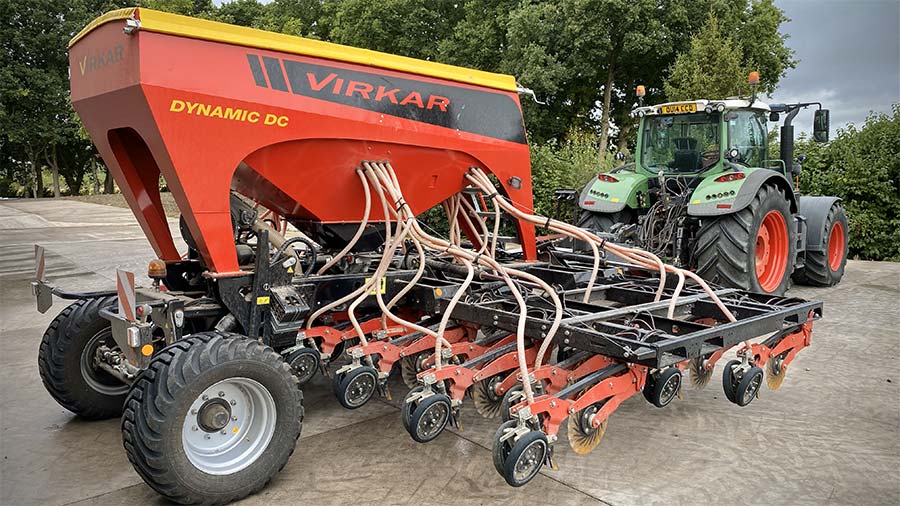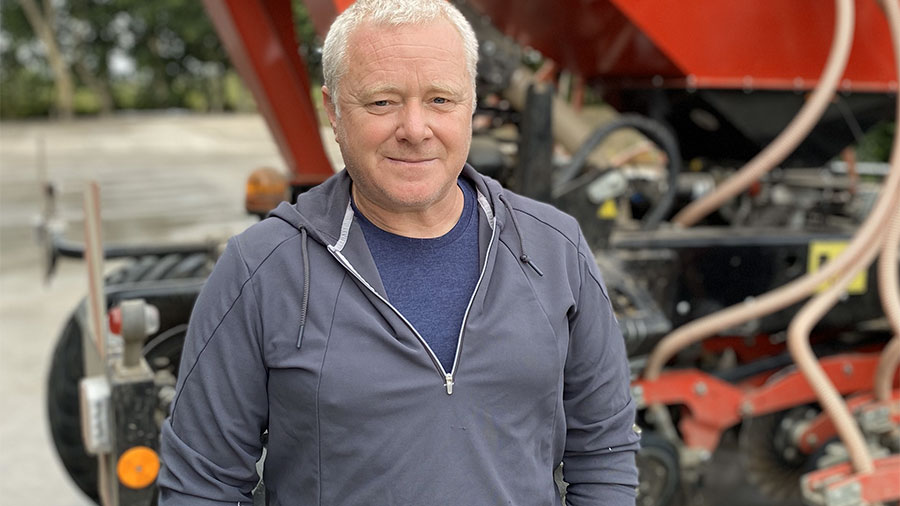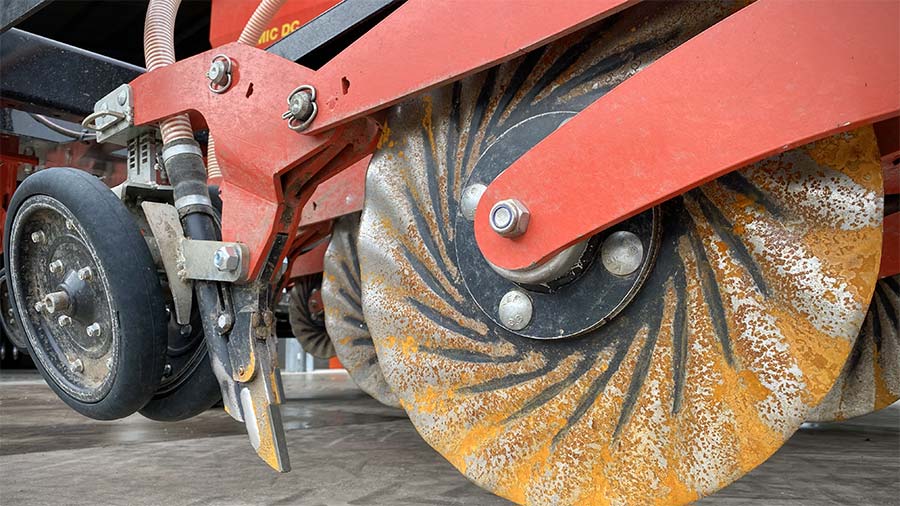Direct drills revisited: 6m Virkar Dynamic DC
 © MAG/Oliver Mark
© MAG/Oliver Mark Two years on from its arrival at Ralph Castle’s 170ha Oxfordshire arable farm, the 6m Virkar Dynamic DC looks as if it could play a prominent role in finally getting on top of a yield-ravaging blackgrass problem.
To do so, it is preceded by a pass – or two if the time allows – with a Kockerling Jockey purely to disturb the surface and encourage a flush of volunteers and weed seeds.
Further mechanical control takes place later in the season, with the weeds hit at least once by an inter-row hoe.
See also: Driver’s view: Ralph Castle’s Virkar Dynamic DC no-till drill
“For the time being, I’m settled on this establishment system, but I’m always looking at what the neighbours are doing to see if there are opportunities to fine-tune it.
“I don’t think there is a better drill out there for me, and certainly not for a sensible price. The only improvements I can think of are extra components, such as trash cleaning discs up front.”

Ralph Castle © MAG/Oliver Mark
Virkar Dynamic DC (2021)
- Width/spacing 6m/190mm
- Coulters/pressure Turbo disc and following tine
- Hopper 5,300 litres, split 65/35
- Price paid £80,000
However, it hasn’t all been plain sailing, with miserable March and April weather resulting in 20ha of spring crops going unsown.
“It rained relentlessly, and I decided that it was cheaper to do nothing than try to maul in a crop.
“If conditions aren’t right, particularly on the green sand, then it’s better to walk away than force it – particularly this year when the grain prices were falling.
“The one downside of a direct drill is that it is less flexible than a conventional system, particularly with spring crops.
“On wet ground the discs will just cut a smeary slot without any friable soil around it, and it is very difficult for the V-wheels to close it back up again.”
But when the going is good and there isn’t too much chopped straw, the rippled “turbo” discs cut a neat channel ahead of the tines and create just enough tilth to encourage quick germination.
The decision to upgrade to JJ Metcalfe’s 12mm-wide low-disturbance points has also proved a good one and, so far, wear has been minimal.
And seed placement has been excellent, provided forward speed is limited to about 8kph.

© MAG/Oliver Mark
Inter-row hoe
To counter the cost of chemicals, Ralph now employs an inter-row hoe, and recently switched his front-mounted 6m Claydon TerraBlade for a heavier-duty model from KRM.
This does a better job of penetrating baked ground than the Claydon, particularly on heavier land later in the spring.
The whole farm was hoed this year, which reduced the blackgrass plant count and, as a result, has begun to diminish the weed seed bank.
“The hoe hasn’t eliminated the blackgrass, but it can make the difference in having a crop when I might previously have looked at getting the glyphosate out.”
Likes and gripes
Likes
- Accurate seed placement in good conditions
- Big hopper minimises downtime
- Steering axle
- JJ Metcalfe points minimise disturbance
Gripes
- Struggles to handle abundant chopped straw
- Metering calibration is a faff
- No break-back mechanism on coulters
- Smeary slot in less-favourable conditions

